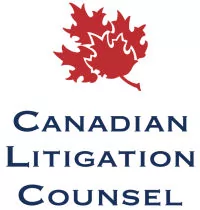On May 13, 2019, the Alberta Court of Queen's Bench released its decision in Day v Woodburn. This case will provide welcomed guidance and support to those involved in insuring and defending individuals employed in the law enforcement or security industries. In the decision, Justice Renke provides a meticulous examination of the test for reasonable use of force outlined in Crampton v Walton 2005 ABCA 81 ("Crampton"). While the second stage of the Crampton test has been exhaustively discussed in other decisions, Day provides a much needed analysis of the third stage used in determining whether the level of force used was reasonable. This analysis will assist defence counsel and insurers alike in establishing a robust defence of reasonable use of force.
The facts of Day highlight many of the problems presented in defending unreasonable use of force claims. In January of 2010, Mr. Day led one helicopter and seven other Edmonton Police Service (EPS) vehicles on a high-speed chase through the icy winter streets of Edmonton. The chase ended in a takedown of Mr. Day that resulted in three cracked ribs. Most of Mr. Day's injuries were the result of multiple knee strikes/stuns administered by EPS officers during the arrest. While the use of knee strikes may seem at first glance excessive and unnecessary to those unfamiliar with police procedures, they represent a commonly used tool in subduing uncooperative and potentially dangerous suspects. Defending the officers required Defence counsel to illustrate to the court that these knee strikes were done with the intention to avoid a further escalation in violence during the process of arrest.
Mr. Day and the members of the EPS gave conflicting testimony regarding how the final moments of the chase occurred. Mr. Day claimed that he was sitting quietly in the vehicle when EPS arrived, and that he only got out of the vehicle when ordered to do so. When he did leave the vehicle, he claimed to have been kicked from behind by one of the defendant officers. Mr. Day denied resisting the arresting officers in any way. This version of events would suggest that EPS officers used a level of force over and above what was required to effect the arrest of Mr. Day.
Somewhat expectantly, the officers gave a dramatically different version of events. The arresting officers described Mr. Day as severely non-compliant and indicated that he repeatedly tried to get up once the officers had detained him on the ground. Once Mr. Day was in handcuffs, no further force was used on him. The use of knee strikes was described as being used to "take the fight out of the suspect" to avoid a prolonged physical altercation.
The first task before Justice Renke was to reconcile the two conflicting versions of the take down and arrest. Justice Renke made a number of findings that led him to determine that Mr. Day was not a credible witness, and was attempting to minimize the role he played in the events as they played out. The first finding was that Mr. Day's over 63 prior convictions, 25 of which were for dishonesty related offences (mostly theft under $5000). That these convictions included dishonesty related offences was found to be more probative than prejudicial in determining Mr. Day's credibility than if they had been for a different type of offence. Mr. Day's record also included multiple citations for obstructing a police officer and flight from a police officer. This pre-existing pattern of avoiding arrest was in keeping with the Police Defendants' description of Mr. Day as an uncooperative (and potentially dangerous) suspect. Justice Renke's commentary on the use of Mr. Day's previous criminal convictions will be a useful in providing direction in navigating the he-said-she said fact patterns that often surround allegations of excessive use of force.
However, the above credibility analysis alone is not what makes this decision notable. After conducting the above review, Justice Renke provides an exhaustive examination of the test for reasonable use of force as outlined by the Alberta Court of Appeal in Crampton v Walton, with much needed attention devoted to the first and third steps. Justice Renke's thorough examination of the Crampton factors will be useful to many in both the insurance and legal industries. For these reasons, the Court's decision in Day will likely make its way into many briefs for summary judgment applications by counsel defending a wide range of professions in the security or law enforcement communities.
The first stage of the Crampton test inquires as to whether the individual was authorised by law to act in the way that they did. Most often, judgments performing a Crampton analysis omit this section, or give it only a passing reference. Justice Renke, by contrast, devotes a significant portion of the judgement to outlining what the powers of a police officer are, and from where those powers arise. He goes on then to examine the concept of an arrest, its nature, and when it had been properly affected. This portion of the judgment will likely be of most use in dealing with non-police defendants (e.g.: security guards, bouncers) for whom the question of whether the Defendant has the authority to act in a certain way is less than certain.
Justice Renke's review of the third stage of the analysis, whether the level of force used was reasonable, will also be of significant interest. Arguing this point of the defence can often be a difficult task for defence counsel. Personal injury lawyers bringing actions on behalf of former arrestees regularly ask the court ignore the deeds of their clients that led to the arrest, and ask that pass judgment on officers through the "lens of hindsight" in the bright comparative safety of a courtroom.
Justice Renke provides a laundry list of factors relevant in determining whether the level of force was excessive. These include the nature of the suspect's alleged offence, the age, size, and health of the suspect in relation to the officers, whether the suspect was intoxicated, and the presence of weapons. Defence counsel should also consider the environment where the arrest took place. The location of the altercation, its nature and relative safety is relevant, as is the length of time over which force was applied and whether the use of force stopped once the subject had been restrained.
Finally, Justice Renke notes that injuries to the suspect are also useful – both in determining how much force was applied to the suspect, and in determining whether the suspect posed an ongoing risk to the officers. This extensive list of relevant factors to consider will be instructive to insurers as well as lawyers, as a robust reasonable use of force defence depends on a complete investigation into the facts of the altercation as early as possible.
Interestingly, Justice Renke allowed into evidence the transcripts from Mr. Day's sentencing by Justice Sanderman. Justice Sanderman 's decision included a finding that at least one of the arresting officers had used excessive force in Mr. Day's arrest, a factor which resulted in a reduced sentence for Mr. Day. Despite this, Justice Renke did not view the finding of Justice Sanderman as determinative in whether or not excessive force was used, and that the Police Defendants were not issue estopped from raising a defence of reasonable use of force provided by sec 25. of the Criminal Code.
Defending law enforcement and security professionals can often be a difficult endeavour. Police services are especially prone to a greater level of scrutiny of the nature of their actions and their decision to use force than they have in previous years. Plaintiffs in personal injury cases involving police officers often attempt to paint themselves as the true victim, minimizing their own conduct in the process. Justice Renke's decision in Day will prove useful for those tasked with defending officers and those in similar industries by providing clarification and guidance for the court on the nature of the law.
* * *
Brownlee LLP is a member of the Canadian Litigation Counsel, a nationwide affiliation of independent law firms .
The content of this article is intended to provide a general guide to the subject matter. Specialist advice should be sought about your specific circumstances.

